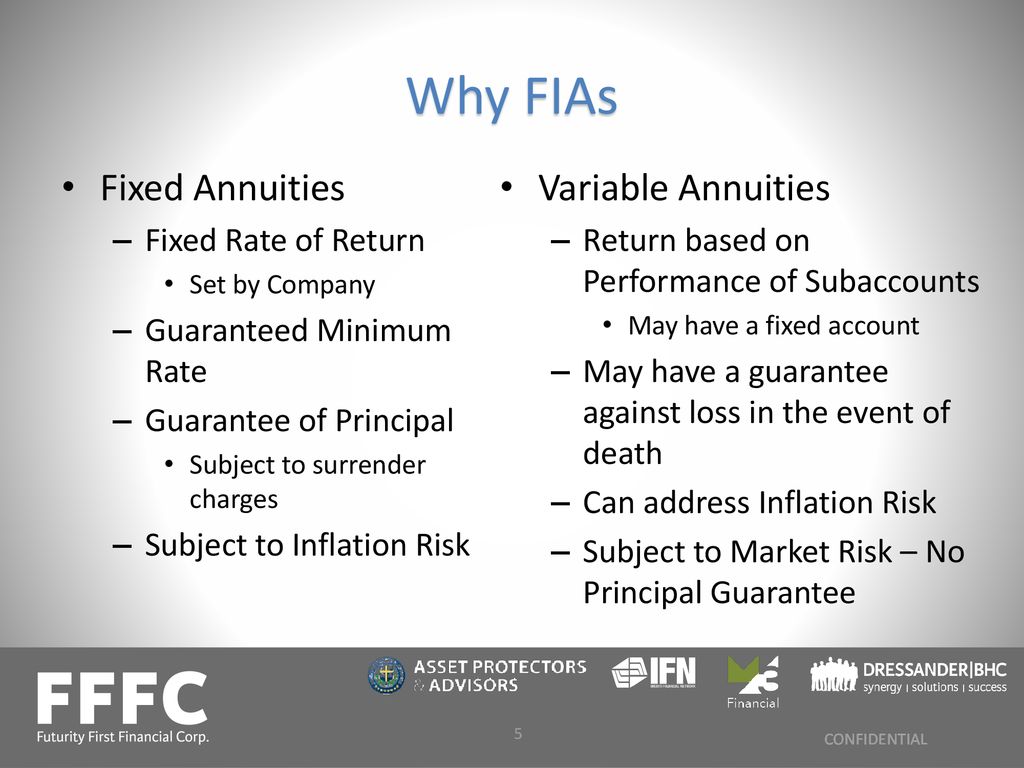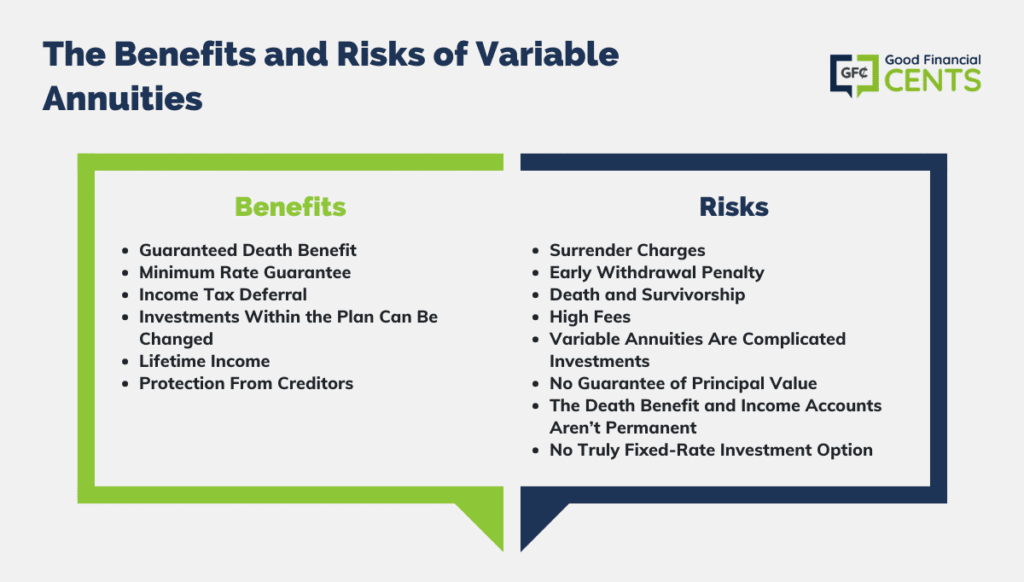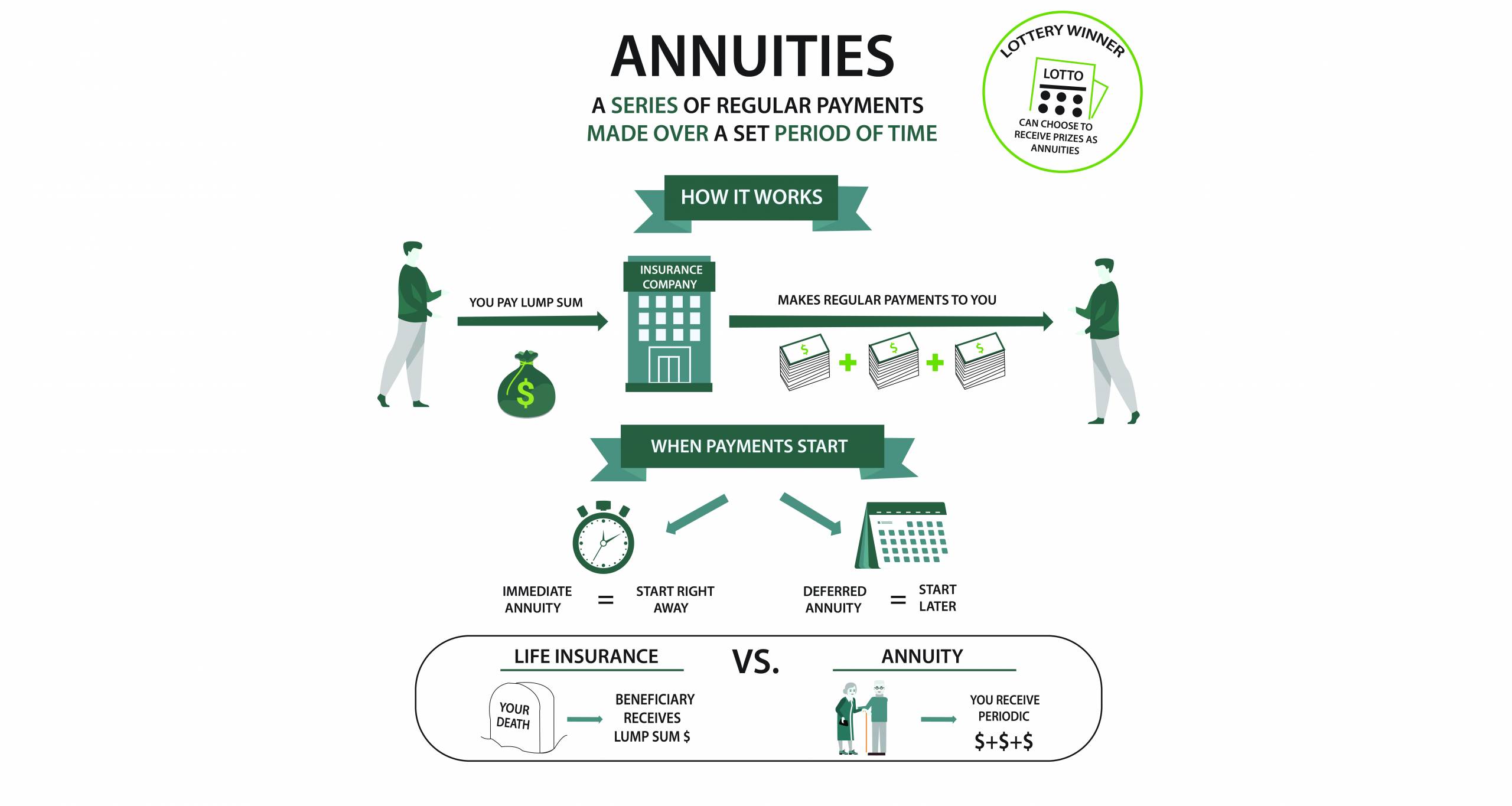All Categories
Featured
Table of Contents
Equally as with a dealt with annuity, the proprietor of a variable annuity pays an insurance provider a round figure or collection of settlements for the promise of a collection of future payments in return. As mentioned above, while a taken care of annuity expands at an ensured, continuous rate, a variable annuity grows at a variable rate that depends upon the performance of the underlying investments, called sub-accounts.

Throughout the buildup stage, properties bought variable annuity sub-accounts grow on a tax-deferred basis and are exhausted just when the contract owner takes out those earnings from the account. After the build-up stage comes the revenue phase. Over time, variable annuity assets must theoretically increase in worth till the agreement owner decides he or she would love to begin taking out money from the account.
The most substantial problem that variable annuities commonly present is high cost. Variable annuities have several layers of fees and costs that can, in accumulation, create a drag of up to 3-4% of the agreement's value each year.
Highlighting the Key Features of Long-Term Investments A Closer Look at Deferred Annuity Vs Variable Annuity What Is the Best Retirement Option? Pros and Cons of Fixed Vs Variable Annuity Pros Cons Why Choosing the Right Financial Strategy Is Worth Considering Deferred Annuity Vs Variable Annuity: Explained in Detail Key Differences Between Fixed Index Annuity Vs Variable Annuities Understanding the Rewards of Long-Term Investments Who Should Consider Strategic Financial Planning? Tips for Choosing Fixed Index Annuity Vs Variable Annuity FAQs About Planning Your Financial Future Common Mistakes to Avoid When Planning Your Retirement Financial Planning Simplified: Understanding Your Options A Beginner’s Guide to Smart Investment Decisions A Closer Look at Retirement Income Fixed Vs Variable Annuity
M&E cost charges are determined as a portion of the contract value Annuity issuers pass on recordkeeping and other management prices to the contract proprietor. This can be in the kind of a level annual charge or a percent of the agreement value. Management charges might be included as component of the M&E threat fee or may be evaluated separately.
These charges can vary from 0.1% for passive funds to 1.5% or more for proactively taken care of funds. Annuity agreements can be customized in a number of methods to serve the particular demands of the contract proprietor. Some typical variable annuity motorcyclists include assured minimum buildup benefit (GMAB), assured minimum withdrawal advantage (GMWB), and ensured minimal income benefit (GMIB).

Variable annuity payments supply no such tax obligation reduction. Variable annuities have a tendency to be highly inefficient lorries for passing wide range to the following generation since they do not take pleasure in a cost-basis change when the original agreement owner dies. When the owner of a taxed investment account passes away, the expense bases of the financial investments kept in the account are adapted to reflect the market costs of those investments at the time of the proprietor's fatality.
Analyzing Strategic Retirement Planning Everything You Need to Know About Financial Strategies Defining the Right Financial Strategy Benefits of Choosing the Right Financial Plan Why What Is A Variable Annuity Vs A Fixed Annuity Matters for Retirement Planning Immediate Fixed Annuity Vs Variable Annuity: Simplified Key Differences Between Fixed Vs Variable Annuity Pros And Cons Understanding the Key Features of Long-Term Investments Who Should Consider Fixed Vs Variable Annuity? Tips for Choosing Fixed Vs Variable Annuity Pros And Cons FAQs About Planning Your Financial Future Common Mistakes to Avoid When Planning Your Retirement Financial Planning Simplified: Understanding Your Options A Beginner’s Guide to Smart Investment Decisions A Closer Look at What Is Variable Annuity Vs Fixed Annuity
Therefore, successors can inherit a taxable financial investment profile with a "tidy slate" from a tax obligation point of view. Such is not the instance with variable annuities. Investments held within a variable annuity do not obtain a cost-basis change when the initial proprietor of the annuity passes away. This means that any built up unrealized gains will be passed on to the annuity proprietor's heirs, along with the connected tax obligation burden.
One substantial issue connected to variable annuities is the potential for problems of rate of interest that might exist on the component of annuity salespeople. Unlike a financial consultant, who has a fiduciary task to make investment decisions that profit the client, an insurance broker has no such fiduciary responsibility. Annuity sales are extremely rewarding for the insurance coverage specialists that sell them due to high in advance sales payments.

Many variable annuity contracts consist of language which positions a cap on the percentage of gain that can be experienced by certain sub-accounts. These caps prevent the annuity proprietor from completely participating in a part of gains that could or else be appreciated in years in which markets create considerable returns. From an outsider's viewpoint, it would certainly seem that financiers are trading a cap on investment returns for the aforementioned assured floor on investment returns.
As kept in mind above, give up fees can significantly restrict an annuity proprietor's capacity to move properties out of an annuity in the very early years of the contract. Better, while the majority of variable annuities permit agreement proprietors to take out a specified quantity throughout the accumulation phase, withdrawals past this amount commonly lead to a company-imposed cost.
Withdrawals made from a fixed rate of interest investment choice can likewise experience a "market value modification" or MVA. An MVA adjusts the value of the withdrawal to mirror any type of adjustments in rates of interest from the time that the cash was spent in the fixed-rate alternative to the time that it was taken out.

On a regular basis, even the salesmen who offer them do not totally comprehend exactly how they function, and so salespeople in some cases prey on a customer's feelings to market variable annuities instead than the advantages and suitability of the products themselves. Our company believe that financiers must fully recognize what they have and just how much they are paying to have it.
Analyzing Strategic Retirement Planning Key Insights on Fixed Vs Variable Annuity Breaking Down the Basics of Variable Annuity Vs Fixed Annuity Advantages and Disadvantages of Variable Vs Fixed Annuities Why What Is A Variable Annuity Vs A Fixed Annuity Matters for Retirement Planning Variable Annuity Vs Fixed Indexed Annuity: A Complete Overview Key Differences Between Different Financial Strategies Understanding the Key Features of Fixed Annuity Or Variable Annuity Who Should Consider Variable Annuity Vs Fixed Annuity? Tips for Choosing the Best Investment Strategy FAQs About Fixed Index Annuity Vs Variable Annuity Common Mistakes to Avoid When Choosing Fixed Interest Annuity Vs Variable Investment Annuity Financial Planning Simplified: Understanding Your Options A Beginner’s Guide to Smart Investment Decisions A Closer Look at How to Build a Retirement Plan
The exact same can not be stated for variable annuity possessions held in fixed-rate investments. These possessions legitimately come from the insurance coverage business and would certainly as a result be at threat if the firm were to stop working. Likewise, any guarantees that the insurance coverage company has accepted supply, such as an ensured minimal earnings benefit, would certainly be in inquiry in the event of a company failure.
Potential buyers of variable annuities need to understand and think about the monetary condition of the issuing insurance business prior to entering right into an annuity contract. While the benefits and disadvantages of numerous types of annuities can be debated, the real concern bordering annuities is that of viability.
As the saying goes: "Purchaser beware!" This post is prepared by Pekin Hardy Strauss, Inc. Choosing between fixed and variable annuities. ("Pekin Hardy," dba Pekin Hardy Strauss Riches Monitoring) for informational purposes only and is not intended as an offer or solicitation for organization. The details and information in this post does not make up lawful, tax, bookkeeping, investment, or other professional guidance
Table of Contents
Latest Posts
Breaking Down Your Investment Choices A Comprehensive Guide to Investment Choices Breaking Down the Basics of Variable Vs Fixed Annuity Pros and Cons of Various Financial Options Why Fixed Vs Variable
Exploring Variable Vs Fixed Annuity Key Insights on Your Financial Future What Is the Best Retirement Option? Features of Smart Investment Choices Why Variable Annuities Vs Fixed Annuities Is Worth Co
Analyzing Strategic Retirement Planning Key Insights on Immediate Fixed Annuity Vs Variable Annuity What Is Annuities Variable Vs Fixed? Features of Fixed Index Annuity Vs Variable Annuities Why Choos
More
Latest Posts